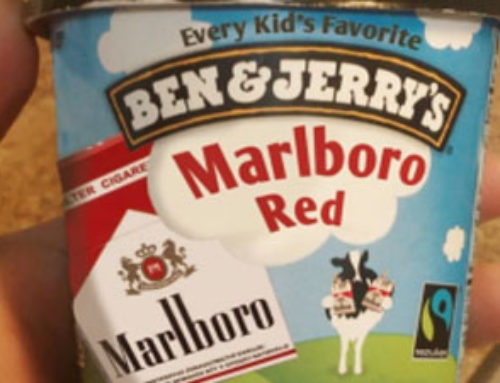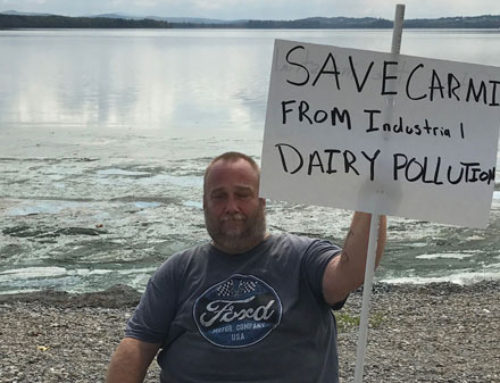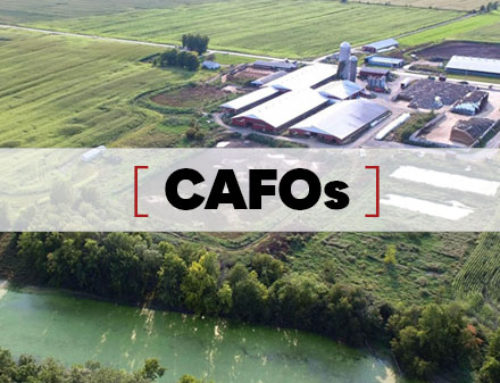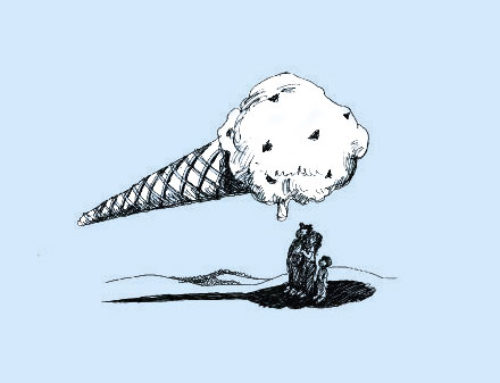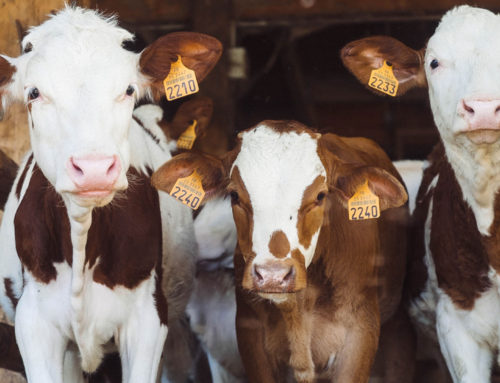
Vermont’s large-farm dairy industry is under increasing scrutiny for a variety of economic, ecological, and humanitarian transgressions. Ben & Jerry’s, for example, was recently the subject of a New York Times exclusive that reported on the existence of the pesticide glyphosate in 10 of 11 samples of its ice cream.
But contamination from the mega-dairies that supply Vermont’s big brands, like Ben & Jerry’s and Cabot Cheese, is nothing new to Vermonters, especially when it comes to the contamination of our waterways. For decades, these iconic brands have garnered enormous profits – each hovering around the $1 billion-a-year level – while pushing a kind of confinement, non-grazing dairy production, resulting in a toxic farm runoff that is literally choking our lakes and streams. Even the beloved Lake Champlain is one of more than 100 other bodies of water in Vermont that are classified as “impaired.” And, in many cases, “impaired” means filled with the green slime that is cyanobacteria, smelling so badly that summer camps have become uninhabitable, and beaches are posted with signs that warn, “no swimming.”
The tales of long-time residents like Jerry Hayden of St. Albans, where the bay is among the most polluted sections of Lake Champlain, are sadly typical of people who have grown up engaged with the state’s lakes and rivers. Hayden is a lifelong fisherman of St. Albans Bay. “It’s not like it used to be when I was a kid,” Hayden told VTDigger. “We went down to Black Bridge and caught huge fish, and it was crystal clear water. Now you can just about walk on it out there. If it gets hot, the weeds grow right out of the water, then there’s stuff on top of the water that floats and stinks real bad.”
Every year, more state and federal money gets spent on trying to reverse the decline of our public waters in Vermont. Yet, every year the problem gets worse. And it seems destined to continue until citizens of all stripes — consumers, property owners, taxpayers, farmers, and naturalists – rise up and force the state and the corporations to shut off the major sources of water pollution that are devastating our lakes and rivers.
We can’t adequately address the problem, however, until the state regulators and legislators admit that the major source of the pollution problem is confined dairy. And then there must be a plan to stop — not just regulate and attempt to dilute — dairy pollution. At some point, we are going to have to get beyond the “all in” rhetoric of the dairy industry and its complicit regulators, whereby they attempt to convince us that even though they’re causing more than half the problem, taxpayers should pay for all of the cleanup.
It’s “all-in” for the taxpayers, and “not-in” for the milk co-ops, like St. Albans (suppliers for Ben & Jerry’s and Crescent Ridge) and Agri-Mark (Cabot Creamery). But they are doing the damage, while we, the taxpayers, are paying for the cleanup. And what do taxpayers get in return? Very little, it turns out, as dairy now represents just 1.4% of Vermont’s GDP. Worse, there are other economic, ecological and social justice issues beyond the water pollution that industrial dairy is forcing upon the state.
This has created a great disconnect between how Vermonters think the state farms and how we are actually farming. The marketing of the once-bucolic hillside farms, with cows grazing in the sunshine is not the reality today. Today’s industrial cow, which represents 80% of Vermont’s agriculture now, never puts a hoof on pasture, instead is confined on concrete, and is all-too-often in need of medication to keep up with the production demands.
The barn work is no longer family work, either, as these factory operations – 2000-plus cows – are now largely staffed by migrant workers. The underground relationship between the farms and these farmworkers makes for conditions all too ripe for exploitation. The migrant workers can’t, for example, even leave the farm for fear of immigration officials and deportation. But this much is certain: they are paid low wages, work very long hours, and do not have even the most basic workplace protections.
Industrial dairy’s damage to Vermont’s waterways is perhaps the most documented of its many threats. Recent estimates from public and private sources are that from 40 to 79% of the phosphorous and nitrogen pollution in Vermont’s waterways comes from dairy farms. And, almost all of the pesticide pollution comes from these dairies. Consequently, the regulation of these dangerously polluting large-scale farms and processing plants is essential, and way overdue.
The official attitude of Vermont’s state agencies is to defend confined dairy and its polluting practices, including the abundant use of pesticides, fertilizers, and antibiotics. In spite of this, officials at the top know that Vermont’s dairy problems are severe and getting worse. According to Julie Moore, the current head of Vermont’s Agency of Natural Resources (ANR), just 3% of the runoff into the lake comes from “point” sources, like wastewater treatment plants or factories. Moore told the Addison Independent that the remaining 97% comes from nonpoint sources — meaning locations all over the watershed, ranging from farms to front yards to highway and road runoff. Moore concluded that roughly half — 48.5% — of that pollution comes from agricultural sources. So, even the regulators know that the major polluter in Vermont is the dairy industry. Yet, they refuse to act.
Ironically, for literally decades, Vermont legislators have passed bills and measures requiring the agencies to regulate dairy pollution, agricultural runoff, pesticide and fertilizer abuse, and excess use of antibiotics, the most recent effort being Act 64. With the passage of each, Vermonters celebrated and then relaxed, thinking that the regulators would enforce and support the enacted regulations. That expectation has been wrong, as state regulators consistently refuse to regulate dairy, no matter how many laws are passed. For example, the Agency of Agriculture and the Agency of Natural Resources are required to collect data on pesticides, fertilizers, antibiotic abuse, water pollution, and toxic effluents, but the agency mandates seem to stop there. They collect the data, then they either don’t analyze it, or they analyze it and hide it. No publications, or no analyses are shared with the public to whom they should be accountable. Instead, we at Regeneration Vermont, along with several other nonprofit organizations, have had to file FOIA requests to obtain the data so that we could analyze it.
As a result of this lack of transparency and the refusal to regulate in Vermont, a state still branded as bucolic, 15 lakes and 86 rivers and streams were deemed as impaired in 2016 by the US EPA. None of Lake Champlain’s 174,175 Vermont acres fully support all designated uses due to the combined effects of mercury contamination, PFOA pollution, nutrient accumulation (nitrogen and phosphorus), and non-native species. To punctuate how widespread the pollution is, according to the EPA, more than 138,900 acres (80%) of the Vermont portion of Lake Champlain were not even swimmable during the summers of 2015 and 2016.
